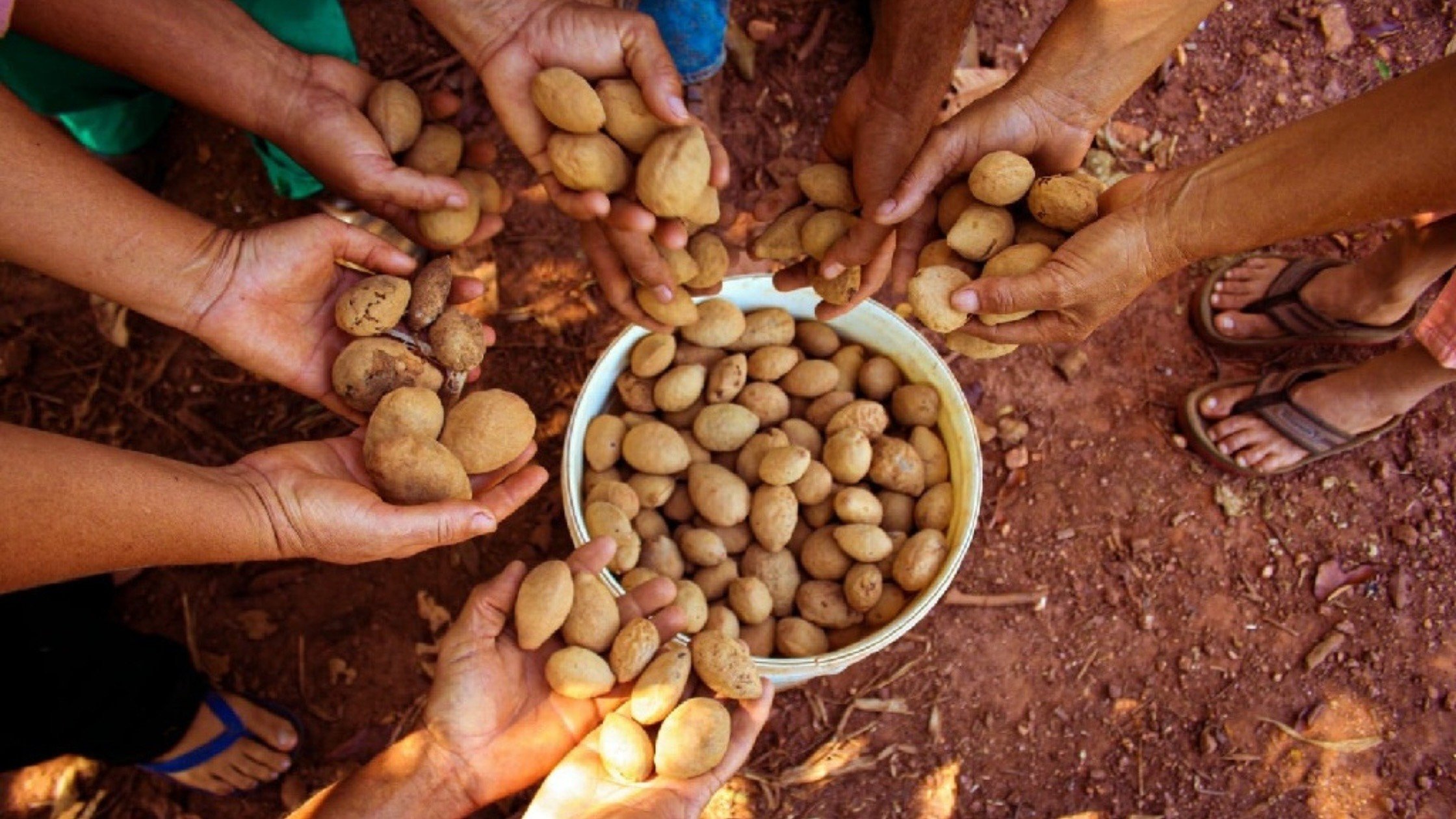What are Baru Nuts?
Baru nuts come from the giant Baruzeiro tree, which grows in the Cerrado - an endangered savannah biome spanning parts of Bolivia, Brazil, and Paraguay. For decades, the Cerrado has been threatened by deforestation. Trees are cut down and the land is cleared for cattle grazing and growing feedstock. The commercial success of Baru nuts is vital to preserving this landscape. The Baruzeiro trees help stabilize the soil, prevent flooding, provide shade, and create habitats for various animals. Their presence is essential for the overall health of the ecosystem.

Baru nuts are encased in a tough shell within a pear-sized edible fruit. Their flavor is similar to a cross between a peanut and an almond. Typically, they are eaten with their nutritious brown papery skin, which adds a pleasant crunch. Nutrient-dense, Baru nuts are also packed with protein, healthy fats, fiber, and essential vitamins.

Nutritional composition of Baru nuts compared to other commercially important nut species. (Source: USDA)
The Social Importance
Baru nuts are now a source of sustenance for indigenous communities in the region. The nuts are not only nutrient-rich but are also a key economic resource for these often isolated communities. The growing demand for Baru nuts in international markets has provided a lifeline to these communities, offering a sustainable and reliable source of income, particularly during the dry season when other economic opportunities are scarce.

Women, in particular, have found economic empowerment through the collection and processing of Baru nuts. This work enables them to support their families, often in regions where men migrate for work.
 Pictured: Women collecting Baru nuts
Pictured: Women collecting Baru nuts
The Environmental Importance
Baru nuts provide an environmental solution amidst the increasing threats of deforestation, illegal logging, and agricultural expansion for cattle ranching. These issues, intensified by global climate change, have caused severe forest fires, particularly in Bolivia’s Chiquitano Forest. The growing demand for Baru nuts offers a promising alternative by promoting the conservation of Baruzeiro trees and their surrounding ecosystems, thus playing a crucial role in preserving the forest.
 Pictured: Baruzeiro tree in Bolivia
Pictured: Baruzeiro tree in Bolivia
Conservation Spotlight
Conservation efforts surrounding Baru nuts extend beyond the forest floor. A powerful example is the San Miguelito Jaguar Conservation Ranch, located just four hours from Santa Cruz de la Sierra in Bolivia’s agricultural belt. While deforestation has ravaged many nearby areas, San Miguelito has managed to maintain over 70% of its natural forest. This area serves as a critical habitat for wildlife, including one of the highest densities of jaguars in Bolivia, and plays a vital role in protecting the Baruzeiro trees that produce Baru nuts.
 Photo Credit: The San Miguelito Jaguar Conservation Ranch.
Photo Credit: The San Miguelito Jaguar Conservation Ranch.
This project combines eco-ethno-tourism with targeted conservation efforts, such as educating local communities and transitioning from white cattle to water buffalo. Acting as bodyguards, water buffalo help reduce the loss of white cattle to jaguar attacks. This shift addresses the economic conflict that often leads to the retaliatory killing of jaguars. Water buffalo also roam freely through nature, reducing the need for extensive forest clearing. San Miguelito emphasizes education, informing cattle ranchers and local communities, about the jaguar's crucial role in the ecosystem.
Bringing tourists to these communities like San Antonio de Lomerío creates new income opportunities, supporting both wildlife conservation (including Baruzeiro trees) and sustainable livelihoods. If you’d like to learn more about San Miguelito Jaguar Conservation Ranch, you can do so by following them on Instagram @jaguarconservationranch or taking a look at their website.
Challenges and Threats
Despite their potential, Baru nuts face significant challenges in terms of production and supply stability. Harvesting is still limited, with Bolivia producing only 5 to 20 tons of Baru nuts annually, depending on weather patterns. The growing international demand, particularly in the U.S., has led to plans to increase production to 2,000 tons per year by 2030, but this will require concerted efforts from indigenous communities, local farmers, and external partners.
Climate change presents another major threat to the region. Bolivia has one of the highest rates of tropical forest loss in the world, driven by the expansion of agriculture and worsening dry seasons. Indigenous communities, who have managed their land for centuries through traditional methods, now face greater challenges in maintaining their way of life.






